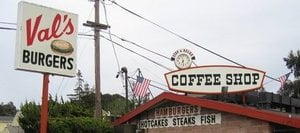Roux-en-Y (often abbreviated as RNY) is generally considered the “gold standard” for weight loss surgery and has been performed in various forms for over 40 years. The surgery process usually begins 2 weeks before your surgery date with a prescribed liquid diet. These 2 weeks leading up to your surgery date will be both mentally and physically challenging. The week after your surgery will be challenging simply because you’re healing from major surgery and the 2nd week after surgery is challenging because you’re learning a new way of eating which can be very difficult.
I’ll go into more detail about each of these 3 stages based on my own experience during the first month of my gastric bypass life. I had laparoscopic Roux-en-Y gastric bypass surgery on November 13, 2007 and in the first month (2 weeks pre-op plus 2 weeks post-op) I lost 27 pounds.
TWO WEEKS PRE-OP – Most surgeons now require patients to follow a strict 2 week liquid diet before gastric bypass surgery. Not all bariatric programs have this requirement, but more and more surgeons are adding this requirement. Many ask why such a strict diet. The reasons are twofold. First this strict diet will help the patient lose weight before surgery. Any weight you can lose before surgery will make you that much healthier and allow for a safer surgery. Secondly a liquid diet will shrink your liver. Your liver is located right in front of your stomach and in morbidly obese patients it is often enlarged due to overeating of complex carbohydrates. By losing weight and restricting food intake to a basic liquid protein diet, the liver will shrink and be less cumbersome for the surgeon. This will help to reduce the risk of complications or a “nicked liver” during the surgery. During the 2 weeks before my surgery, I lost 15 pounds.
Although I haven’t read this next reason in any medical research, my own experience proves it to be true. This strict liquid diet is to begin to train our brain to eat in a different way. I was limited to 3 small protein shakes, 1 cup of broth/soup and 1 fiber drink per day with the addition of 64 ounces of water. The first three days were brutal and I had more cravings for food than I ever thought possible. I believe I was dealing with sugar and carb withdrawals. The fourth day seemed to begin the easier phase of the diet, after my body became accustomed to the fact that I could survive on so few calories while still getting the nutrients I needed. Even though the food cravings were still there, I was able to deal with them mentally and emotionally during those first 2 weeks. Because I was able to face the craving demons before surgery, I believe it has made my post-op eating easier to adjust to.
THE WEEK OF SURGERY – For most Roux-en-Y gastric bypass patients the hospital stay is 2 to 4 days. People who have their surgery laprascopically they can expect 2 to 3 days. People who have an open incision may be in the hospital an extra day. While in the hospital your surgeon will have you taking pain medication to minimize any discomfort you may feel. If the pain medication you are given is not working properly or is making you nauseous, be sure to let your doctor know so they can make an adjustment. This happened to me while I was in the hospital. I was given a morphine pump to control my pain, however, the morphine made me sick to my stomach. So my pain medication was quickly changed to Nortab and I was given anti-nausea medicine to settle my stomach.
The first day – the day of your surgery – you will likely not be able to drink anything including ice chips. This will allow time for your new stomach/pouch to heal. The following morning you will be taken for your “swallow test” to check to see if there are any leaks in your newly formed digestive system. This involves swallowing some barium and having x-rays taken of your abdomen. The hardest part of this test was standing upright and still for the 5 or 10 minutes the test takes. Once you pass this test you’ll be given water or Crystal Light to sip. Usually it is served in a 1 ounce medicine cup and you’ll need to sip that water for 15 minutes, then refill the cup and start over. This will help to train you to take very tiny sips of liquid and take your time drinking. Later that day you may graduate to a larger variety of liquids like gelatin, broth, hot tea or protein shakes. You’ll remain on a liquid diet while in the hospital.
Once you get home from the hospital you will probably remain on a liquid diet for the remainder of the first week. Some programs require patients to remain on a clear liquid diet for the first week of gastric bypass surgery. Some programs allow patients to include “full liquids” such as yogurt, cream soups and cottage cheese. When I came home from the hospital I was on full liquids and was required to drink 3 protein shakes per day. I was also required to take in 64 ounces of water each day. Even though it is expected that in the first week or two it will be nearly impossible to meet the water and protein goals – you are expected to try your best during this time. You’ll be eating about 1 to 2 ounces of food (full liquids) at one setting during this early stage.
TWO WEEKS POST-OP – I was amazed at how well I felt after just the first week of recovery. I was able to get around just fine and was healing quickly. But the eating part of the recovery process was still a challenge. Depending on your surgeon’s requirements and nutritionist guidelines, you may continue to be eating full liquids one week after your gastric bypass surgery. Some patient progress to soft foods at this point. No matter what your guidelines are, be sure to follow what your doctor mandates. They have developed your nutritional program based on years of experience and helping hundreds or thousands of other post-op patients. By now you’ll be eating about 1 to 3 ounces of food (full liquids) at one setting.
I was on full liquids this second week after surgery until I had my follow-up appointment with my surgeon. Because of scheduling conflicts, my normal 2-week follow up appointment ended up happening just 8 days after my surgery (which also happened to be the day before Thanksgiving). At this appointment I was told to begin the next phase of my eating plan which included soft foods such as egg salad, pate`, hummus, peanut butter, refried beans and soft or melted cheese. I was also allowed to add up to 1 tablespoon of a “side item” which included either vegetables or a grain (from a very limited list that was basically crackers). This allowed me a little bit more of a variety of choices at Thanksgiving.
The biggest challenge during these first couple weeks after surgery is the struggle to adapt to your new way of eating and figuring out a schedule for meals, snacks, protein shakes and water intake. Not to mention trying to figure out when to take your medications, vitamins and supplements in between all the meals and water. Instead of being obsessed with food, I quickly became obsessed with watching the clock and trying to stay on schedule with my eating. Because at this early stage we don’t have true hunger pangs, you need to rely on the clock to ensure you’re eating enough to keep your body nourished.
Other people who have gone through this journey before me keep saying that the first month is the hardest part of the whole RNY gastric bypass surgery process. Once you pass the 6 week mark, things get easier and the variety of food you’re allowed is much greater. So hold on during these first weeks and know it’s going to get better soon.


